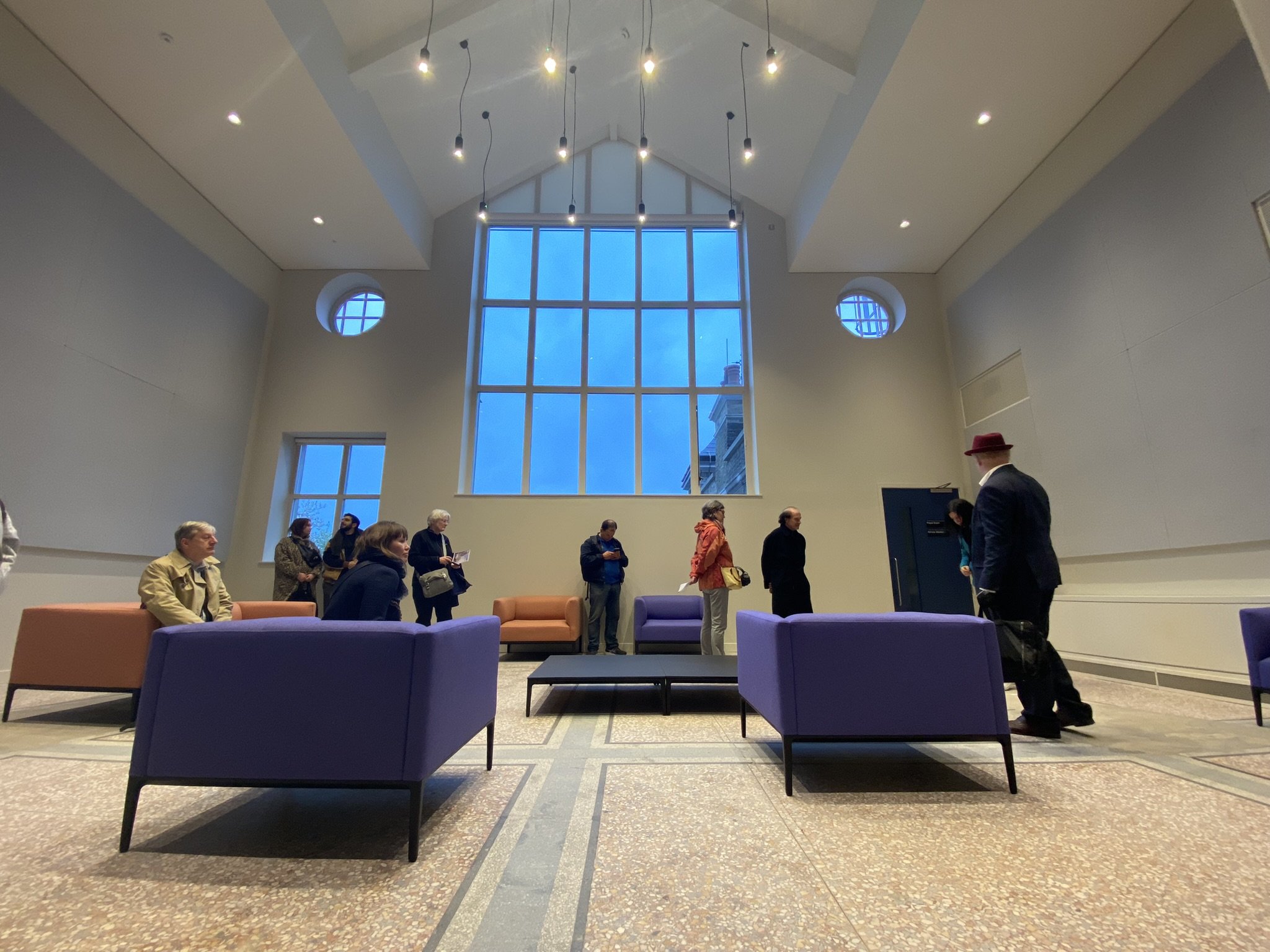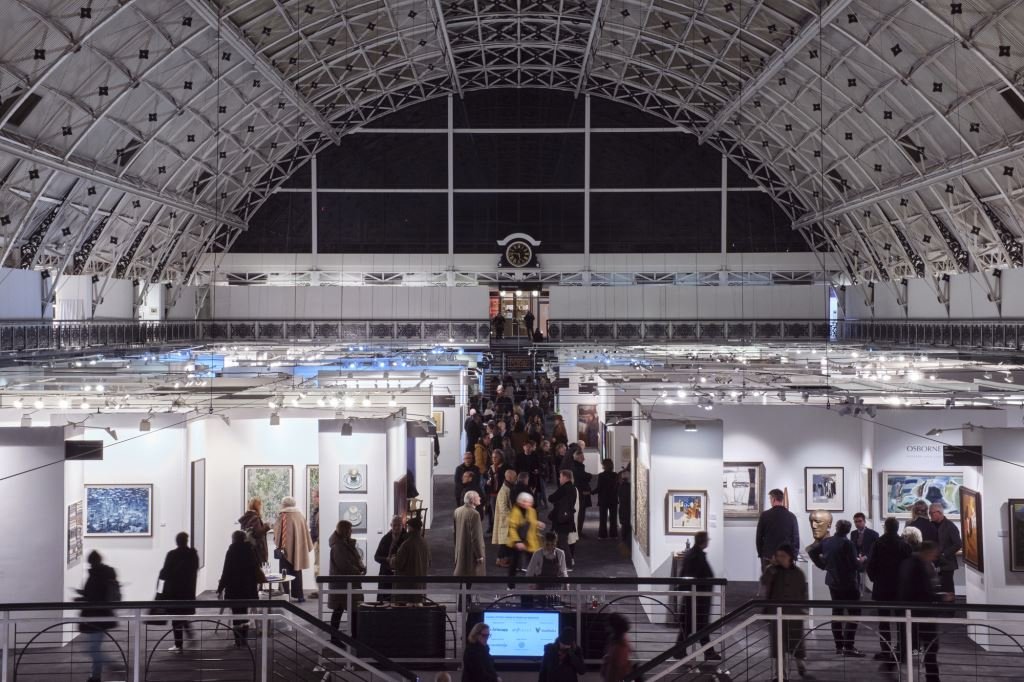Virtual Building Tour – Ombú by Foster + Partners
Fiona Mckay
Photo by Gregory Fonseca
The 2024 series of the AIA UK Chapter’s “Virtual Building Tours” convened on 20 June with a visit to Ombú, designed by Foster + Partners (F+P) and completed in 2022. The tour was given by Taba Rasti, Pablo Urango Lillo and Emilio Ortiz Zaforas all from Madrid, Spain. The team provided a historic context of the renovation of Ombú, a transformative office building built for the Spanish infrastructure and energy company, ACCIONA. This retrofit project breathes new life into a historical industrial building in the Spanish capital, creating a sustainable exemplar of building reuse and revitalising the surrounding area. The concept development was focused on the workplace well-being of building’s occupants and the construction methodology for the restoration of historic and structural elements of the building.
Foster + Partners’ retrofit of the abandoned warehouse created 10,000m2 of workspace. On the surface, it qualifies as one of the least Foster-like building ever encountered. However, once one scratches below the surface, the structure exemplifies how practitioners should approach the design and adaptive reuse of the plethora of dilapidated and unused buildings in our global cities. F+P has not only breathed new life into the landmark building but also developed a carbon neutral workplace, providing an exceptional example of sustainability in action.
During the tour, F+P team explained how they ‘kept it simple’ by stripping the building bare, ‘cleaning and polishing it up’ and inserting a simple giant-tiered cake of staggered platforms, formed of glulam slabs and columns on a diagonal grid.
Despite its abandonment, the building was in a relatively good condition, meaning the restoration was a simple, straight forward clean-up of the brick and existing metal roof. Inside, the lightweight tiered structure introduced to maximise useable space is made from locally sourced timber. Like a piece of handmade, custom furniture, the craftsmanship is a delight. Due to the generous existing glass openings and central skylight flooding the interior with additional natural light, artificial lighting is minimal. As a bonus, the glass integrates photovoltaics to generate electricity.
The gardens are impressive, due to the team’s intent to provide "biophilic spaces" to maximise employees' well-being through the building's connectivity to the outdoors. Madrid's moderate climate enables use of the workspaces outside as well as inside, providing a flexible and healthy regime. A natural timber element is brought into the existing building, further enhancing wellbeing and improving productivity.
The adaptive reuse of Ombú is a demonstration to what can be achieved in providing modern uses in older buildings, whilst being led by responsible carbon neutral design.
The AIA UK Chapter continues to host its building tour series for the 2024 season based on Winners of AIA UK 2023 Excellence in Design Awards. The series offers architects the opportunity to visit notable buildings that have particular design interests in the UK and abroad. Follow this link HERE for further information to participate in the next tour of Saltmarsh House by Niall McLaughlin on 12 September 2024.
Written by Gregory Fonseca, AIA

















